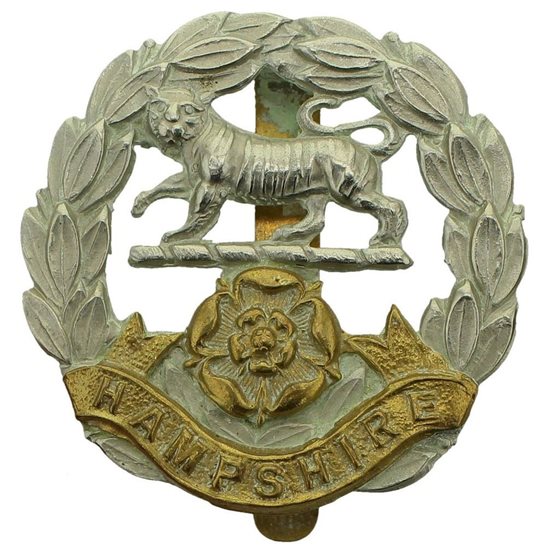Personal Details
Born: 18 July 1889 in Adderley, Shropshire. He and his twin brother Lancelot were baptised 25 August 1889 at Adderley Parish Church.
Family: He was the third child born to John Freer, a groom, and his wife Fanny, nee Done. He married Ada Louise Bowyer on 21 November 1914 in Shipbourne, Kent. The couple had one child, Joyce, born in 1923.
Residence: Leonard lived in Adderley until at least 1901 but by 1911 he had moved to Waddesdon, Aylesbury, Buckinghamshire. An address of 2 Terrick Cottages, Whitchurch was given for him on the 1919 Absent Voters List. This was in fact the home of his parents. The 1939 Register had an address of Gardeners Cottage, Old Lodge, Uckfield, Sussex for him and his family. At the time of his death in 1968 he was living in the Braintree district of Essex.
Employment: Throughout his working life Leonard was a gardener.
Died: Quarter 3 1968 in Braintree, Essex, aged 79
Military Details
Regiment: Hampshire Regiment
Rank: Private
Service Number: 33738
Date of Enlistment: 15 November 1915
Date of Discharge: 12 December 1918
Reason for Discharge: Not known
Other Information: Leonard’s younger brother, Percy, was killed in action at Gallipoli, 23 July 1915, aged 23.
Leonard was awarded the Campaign Medals (British War Medal and Victory Medal).

The British War Medal (also known as 'Squeak') was a silver or bronze medal awarded to officers and men of the British and Imperial Forces who either entered a theatre of war or entered service overseas between 5th August 1914 and 11th November 1918 inclusive. This was later extended to services in Russia, Siberia and some other areas in 1919 and 1920. Approximately 6.5 million British War Medals were issued. Approximately 6.4 million of these were the silver versions of this medal. Around 110,000 of a bronze version were issued mainly to Chinese, Maltese and Indian Labour Corps. The front (obv or obverse) of the medal depicts the head of George V. The recipient's service number, rank, name and unit was impressed on the rim.
The Allied Victory Medal (also known as 'Wilfred') was issued by each of the allies. It was decided that each of the allies should each issue their own bronze victory medal with a similar design, similar equivalent wording and identical ribbon. The British medal was designed by W. McMillan. The front depicts a winged classical figure representing victory. Approximately 5.7 million victory medals were issued. Interestingly, eligibility for this medal was more restrictive and not everyone who received the British War Medal ('Squeak') also received the Victory Medal ('Wilfred'). However, in general, all recipients of 'Wilfred' also received 'Squeak' and all recipients of The 1914 Star or The 1914/1915 Star (also known as 'Pip') also received both 'Squeak' and 'Wilfred'. The recipient's service number, rank, name and unit was impressed on the rim.

